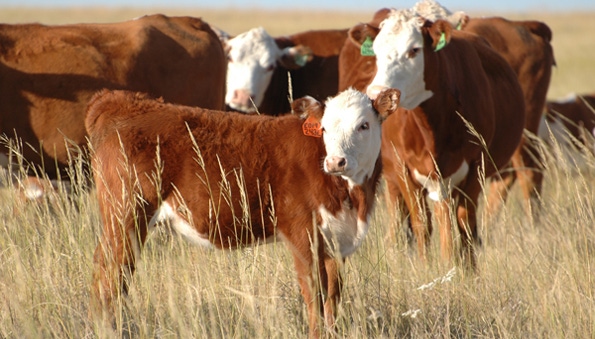5 tips to make good cows and a profitable herd
Cow longevity is more dependent on fertility than anything else.
November 7, 2019

Last month I wrote that good cow herds start with good heifers—those that breed early in the breeding season with low inputs and can result in a profitable cow herd. We should let nature and the bull do most of this selection.
With a group of early bred, pregnant yearling heifers, we may want to make sure their nutritional needs (especially protein) are met at the tougher times of the year. If they get pregnant again as two-year-olds to calve early as three-year-olds, they most likely will become very fertile herd cows with good longevity. Remember, longevity is more dependent on fertility than anything else
There are exceptions. Occasionally, I visit with ranchers who get good conception rates with yearling and two-year-old heifers but get low conception rates with three-year-olds and even older cows. My observation suggests that it is the result of “over-development” of yearling and two-year-old heifers and then expecting them to function well on minimal inputs as mature cows.
In my speaking opportunities, ranchers often tell me that they are struggling to get conception rates in the 80s (percent pregnant) when it used to be easy to have them in the 90s. As I ask questions, the answers almost always suggest the problems to be bigger cows, higher milk production and less heterosis than in past times of good fertility.
Their culling practices seem to be removing the right cows: opens, dries, those which need attention, those with poor calves and the ones with poor dispositions. This makes me think that they must be using bulls that are “undoing” what they are trying to accomplish with their culling practices.
5 key cow selection practices
There are a number of things we need to remember:
Most genetic change—good or bad—comes from the bulls. And, good maternal bulls come from good cows bred to good maternal bulls. Nature is trying to tell us which ones are the good ones. Are we listening (observing and counting)? We must select exceptional cows to be the mothers of bulls.
For most of my management career, I considered myself a commercial producer with one significant difference—we produced our own bulls. We had several large herds with one designated as a seedstock herd. Every female born on the ranch was considered a possible seedstock cow until she proved she should not be.
To get to the seedstock herd, she had to raise two good calves and be bred early to have her third calf as a four-year-old cow. She also never could have been handled for any purpose except routine immunizations. That meant no assisted births, no doctoring, etc. Our commercial bulls were selected from those cows. We bought and used semen from bulls whose closely related females were the kind of cows we wanted.
What makes a good cow herd? Fertility or high conception rates, little or no sickness, no lameness, good (not exceptional) growth rates with minimal fed feed inputs, and good longevity.
To state it simply, good cows raise a good calf and rebreed every year with minimal fed feed, don’t have issues that require the rancher’s attention and time, and live a long time. Most of your herds have some of those cows. If some can do it, why can’t they all?
Most cows are culled for economic, not genetic, reasons. They are open or dry, have bad dispositions, raise a poor calf, or have enough age to diminish future productivity. They are no longer paying their way.
If done regularly and with timely marketing, this culling can have a distinct economic impact on herd or ranch profitability. There is also a genetic impact from that kind of culling, but it is quite slow.
Pay attention to conception rates and low inputs, not cow size. However, remember there is a negative correlation between frame size and feed intake. A smaller cow can meet maintenance requirements with less feed intake than a larger cow.
There is reason to like cows with less hip height and more weight. If cows are too large for your environment and management, they will eliminate themselves; and the size of cows in your herd will decrease unless you select bulls that don’t fit your environment.
In selecting maternal bulls, a good ratio of weight per inch of height will help you find bulls to sire good growth rates within a moderate frame size. I know a breeder who uses only yearling bulls on yearling heifers. He then uses DNA parentage information to array those bulls from most to fewest number of calves sired. This should be a pretty good test for semen quality, libido, and structural soundness. The good ones get the job done.
To summarize, good cows are the genetic result of combining 1) bulls that grow rapidly to a year of age within a moderate hip height and can sire a lot of calves as a yearling bull with 2) cows that always calve early in the calving season (result of first cycle conception), raise a good calf every year, have a good disposition, and require no individual attention from the rancher.
Teichert, a consultant on strategic planning for ranches, retired in 2010 as vice president and general manager of AgReserves, Inc. He resides in Orem, Utah. Contact him at [email protected].
About the Author(s)
You May Also Like


.png?width=300&auto=webp&quality=80&disable=upscale)
